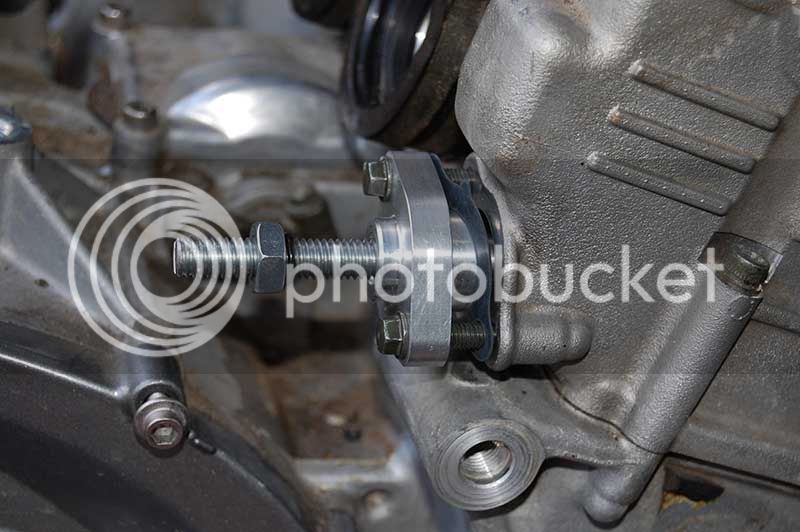Radiohowie are you there,,lol,,anyway guys I have an 06 fjr that I replaced the motor at 81000, the new motor has 32000 miles, I am getting the camchain noise from this motor, I read somewhere that they make a manual camchain tensioner,,my question is?? is it hard to adjust and how offen do your adjust it??if u remove the timing cover is there enough room to get your fingers in there to feel the tension??and how much slack if any should it have??and how offen do u adjust it?? i would appreciate feed back,, this forum have helped me a lot in the past,,thanx,, best regards Gary
If you're VERY careful, you can replace the OEM CCT with the Manual CCT without opening up the chain case. I wouldn't, but it can be done.
The downside of doing the R & R WITHOUT pulling the case cover is you won't know if the chain slips. The downside of doing the R & R WITH pulling the case cover is that the dowel pin that locates the tensioner guide will probably pull out of the engine block when the cover comes off, allowing the guide to slip down, putting a TON of slack in the chain, and allowing the slack to pile up on the crank sprocket. It's a Catch22.
All that being said,
HERE is a thread well worth reading concerning your planned replacement. And
another.
As to your other questions, take a look at the picture:
The APE CCT is very simple to adjust....loosen the big-ass locknut on the threaded shaft, screw the shaft in clockwise.
I used finger pressure only, even though the shaft is slotted for a screwdriver. After screwing the shaft in as tight as I could using ONLY my fingers, I snugged down the locknut, and since I had the case cover off, rotated the motor clockwise two or three turns with a wrench, to make sure the chain had rotated around at least twice. Loosened the locknut and was able to turn the screw in MAYBE 1/16th of a turn more. Snugged the locknut up again, did the rotate the crank boogie another 6 or 7 revolutions, and checked the tension shaft again. Could NOT turn it in any further.
I'm confident that put enough pressure on the chain slider to be "just enough" to keep the chain tight without being over-tight. That was at 46,000 miles when I replaced my motor.
At 50,000 miles, I did my first oil change and checked the APE CCT. Loosened the locknut, attempted to turn the adjuster shaft ONLY with my fingers, tightened the locknut down. Didn't move. Bumped the starter to rotate the motor a few revs, re-checked...still no movement. My original setting a month earlier was still Goldilocks....."just right!"
Went through the same process at 54,000 miles and no adjustment was necessary. I'm due for ANOTHER oil change, but doubt I'll bother checking again until I hit 62K, my next oil change. I don't have any problem skipping this oil check.
But so far, I've checked the APE tensioner 3 times in 8,000 miles and the chain hasn't developed a hint of slack, so I feel good about it.































































